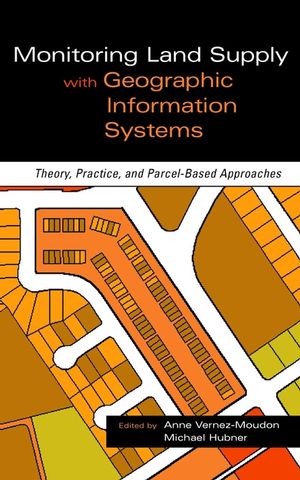Monitoring Land Supply with Geographic Information Systems: Theory, Practice, and Parcel-Based ApproachesISBN: 978-0-471-37163-2
Hardcover
352 pages
May 2000
 This is a Print-on-Demand title. It will be printed specifically to fill your order. Please allow an additional 10-15 days delivery time. The book is not returnable.
|
||||||
Monitoring Land Supply with Geographic Information Systems Theory,
Practice, and Parcel-Based Approaches
Monitoring the supply of buildable land and its capacity to accommodate growth within urbanizing regions is an increasingly important component of urban planning and growth management. Recent developments in Geographic Information Systems (GIS) have opened up new opportunities for local and regional government to monitor land supply and capacity. Based on a study sponsored by the Lincoln Institute of Land Policy, this book reviews the state of the art in land monitoring, particularly as it benefits from the introduction of GIS data and analysis capabilities at the level of individual land parcels.
Monitoring Land Supply with Geographic Information Systems addresses:
* Technical and methodological frameworks for data collection and analysis as well as applications to a range of policy concerns
* Case studies of successful land monitoring programs, including Portland, Oregon; Montgomery County, Maryland; and the Puget Sound Regional Council in Washington
* Thematic topics ranging from database design to urban simulation modeling to organizational contexts
* Detailed findings of a national survey of land supply monitoring programs
This guide presents a comprehensive, timely, and critical overview of a fast-emerging field of planning and policy analysis. It provides an invaluable resource to professionals, including land use and economic development planners, GIS analysts, local government officials, and private developers.
Monitoring the supply of buildable land and its capacity to accommodate growth within urbanizing regions is an increasingly important component of urban planning and growth management. Recent developments in Geographic Information Systems (GIS) have opened up new opportunities for local and regional government to monitor land supply and capacity. Based on a study sponsored by the Lincoln Institute of Land Policy, this book reviews the state of the art in land monitoring, particularly as it benefits from the introduction of GIS data and analysis capabilities at the level of individual land parcels.
Monitoring Land Supply with Geographic Information Systems addresses:
* Technical and methodological frameworks for data collection and analysis as well as applications to a range of policy concerns
* Case studies of successful land monitoring programs, including Portland, Oregon; Montgomery County, Maryland; and the Puget Sound Regional Council in Washington
* Thematic topics ranging from database design to urban simulation modeling to organizational contexts
* Detailed findings of a national survey of land supply monitoring programs
This guide presents a comprehensive, timely, and critical overview of a fast-emerging field of planning and policy analysis. It provides an invaluable resource to professionals, including land use and economic development planners, GIS analysts, local government officials, and private developers.



